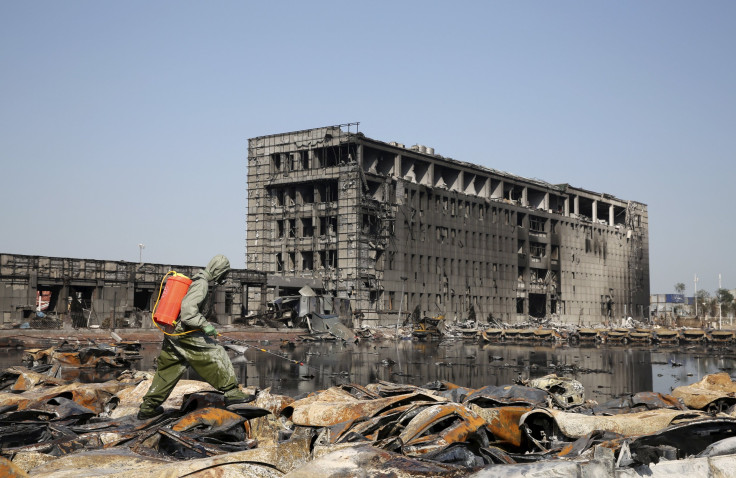China Explosion: Contaminated Tianjin Dirt From Blasts Headed For Special Storage Container

Dirt that was contaminated from deadly explosions at a hazardous goods warehouse in Tianjin, China, in mid-August is headed for an enormous "leak-proof" tank about two and a half miles from the site of the blasts. At least 145 people died and hundreds were injured in the explosions, and some of the chemicals stored at the warehouse at the time were toxic.
The new tank under construction has a surface area of 20,000 square meters and will be lined with five and a half inches of a purportedly impenetrable layer of sand and bricks, along with other material that guards against leakage, the South China Morning Post reported.
Since the explosion, residents of the Tianjin area have reported foul smells. The warehouse stored at least 700 tons of sodium cyanide, which can form a toxic vapor when combined with water, the New York Times reported. After the explosions, dead fish washed up by the thousands on the banks of a nearby river.
China is holding 23 people linked to blasts in Tianjin that killed 139 and injured hundreds. http://t.co/lWESJubR3A pic.twitter.com/mTr0vZK0NQ
— New York Times World (@nytimesworld) August 28, 2015The environmental protection department of Tianjin, however, has said that the foul smells came from methanethiol, which is produced when organic matter decomposes. The department said it posed no threat to human health.
According to Chinese safety regulations, large warehouses of hazardous chemicals cannot be located within a kilometer, or 0.6 miles, of residential sites, public buildings or transportation lines. But the warehouse in Tianjin did not adhere to those standards, with at least three residential complexes built within a kilometer of the site. It was not immediately clear whether the location of the new storage container for the contaminated dirt was subject to, or abided by, those rules.
When soil is contaminated, it can hurt plants, animals and humans in the surrounding area. According to the U.S. Environmental Protection Agency, contaminated soil is generally cleaned in one of three ways, one of which is to remove that soil from the ground and "dispose" of it.
© Copyright IBTimes 2024. All rights reserved.






















